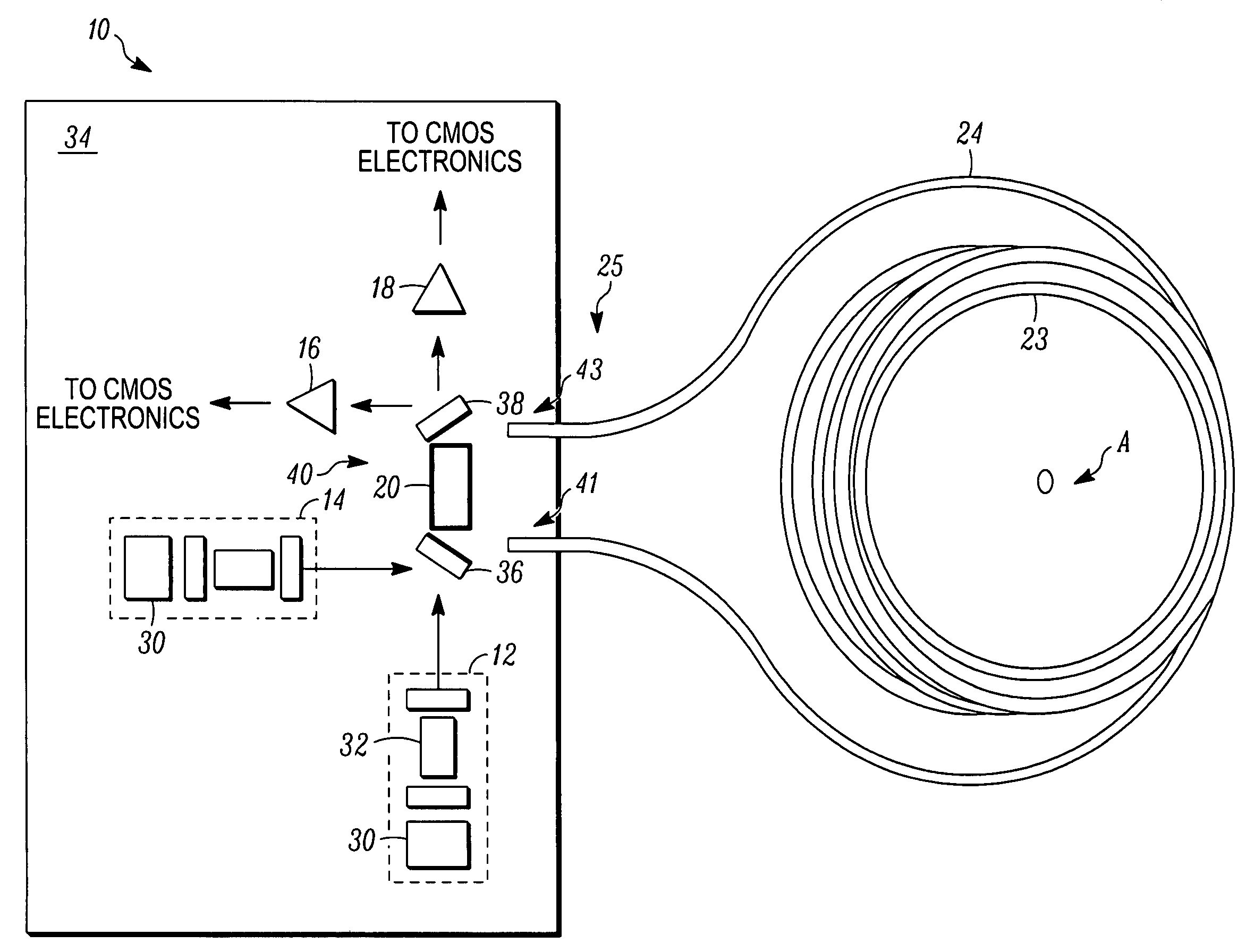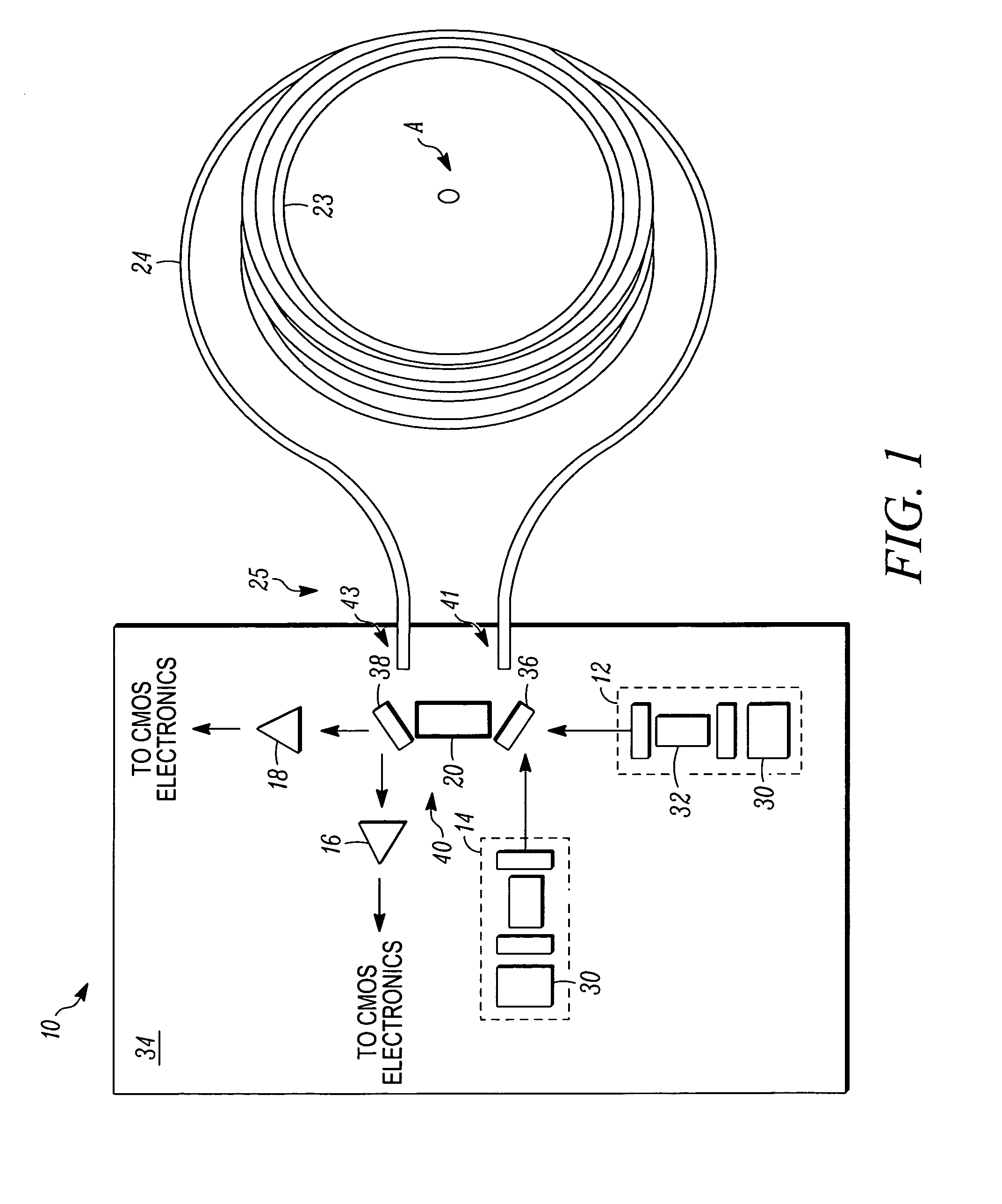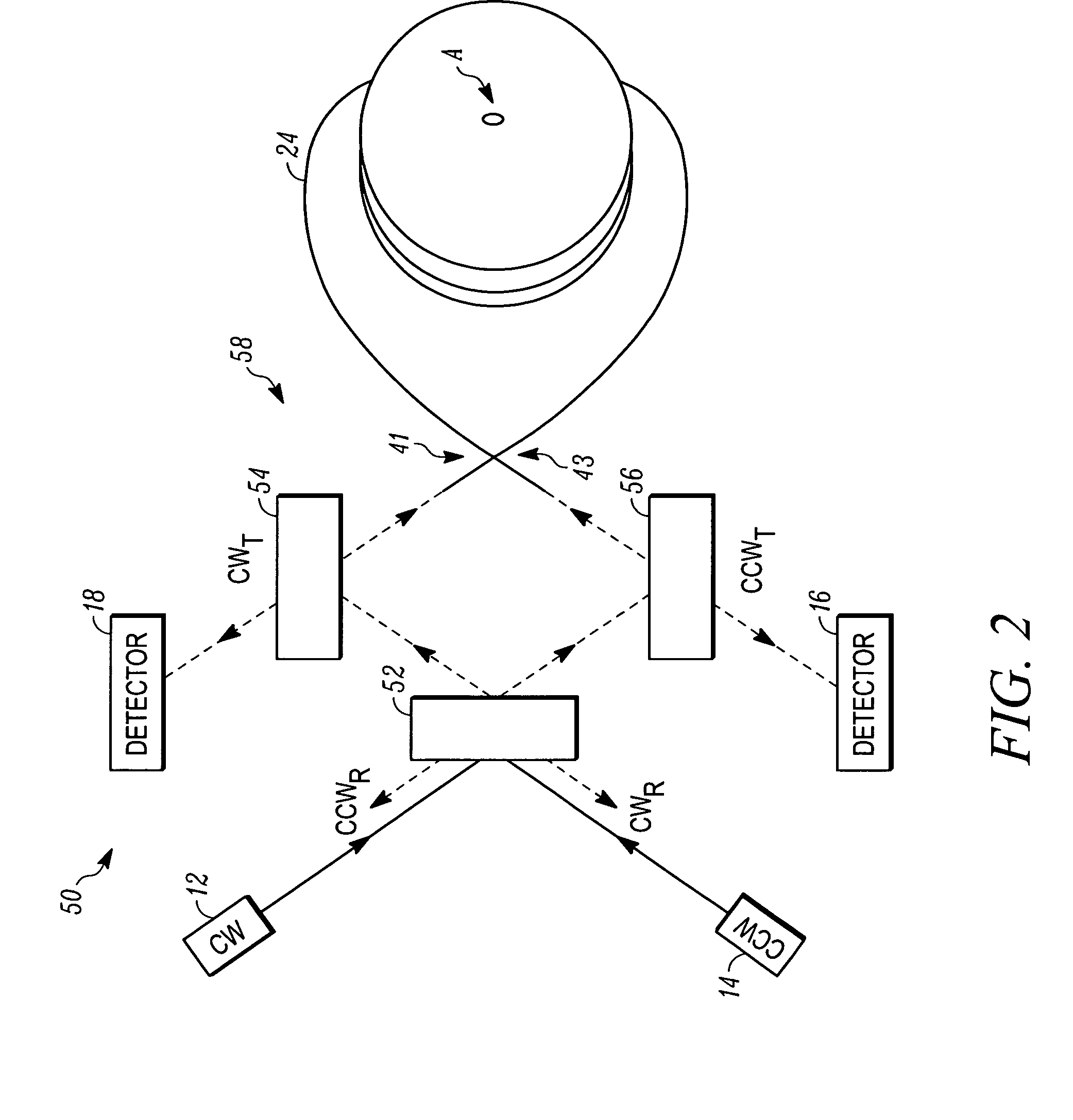Optical resonator gyro and method for reducing resonance asymmetry errors
a technology of optical resonators and gyroscopes, applied in the field of gyroscopes, can solve the problems of reducing the accuracy of rotational rate measurement, false indication of rotation or inaccurate measurement of rotation rate, and polarization errors, and achieve the effect of reducing resonance asymmetry errors
- Summary
- Abstract
- Description
- Claims
- Application Information
AI Technical Summary
Benefits of technology
Problems solved by technology
Method used
Image
Examples
Embodiment Construction
[0023]The following detailed description of the invention is merely exemplary in nature and is not intended to limit the invention or the application and uses of the invention. Furthermore, there is no intention to be bound by any theory presented in the preceding background of the invention or the following detailed description of the invention.
[0024]The present invention is a resonator gyro that attenuates resonance asymmetry errors and a method for operating a resonator gyro while attenuating resonance asymmetry errors that may be produced during operation of the resonator gyro. In an exemplary embodiment, the resonator gyro includes, but is not necessarily limited to, a ring resonator, one or more mirror-reflectors, and one or more photodetectors. The components of the resonator gyro are configured in a symmetric architecture to filter out (e.g., spatially filter, polarize out, and the like) stray light (e.g., non-mode-matched light) in the ring resonator in both directions (e.g...
PUM
 Login to View More
Login to View More Abstract
Description
Claims
Application Information
 Login to View More
Login to View More - R&D
- Intellectual Property
- Life Sciences
- Materials
- Tech Scout
- Unparalleled Data Quality
- Higher Quality Content
- 60% Fewer Hallucinations
Browse by: Latest US Patents, China's latest patents, Technical Efficacy Thesaurus, Application Domain, Technology Topic, Popular Technical Reports.
© 2025 PatSnap. All rights reserved.Legal|Privacy policy|Modern Slavery Act Transparency Statement|Sitemap|About US| Contact US: help@patsnap.com



